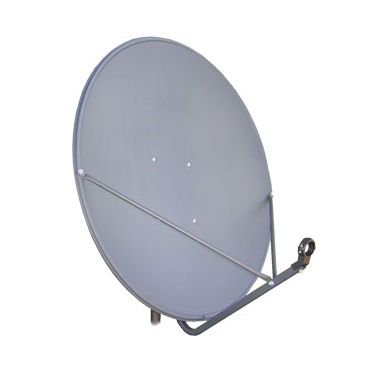Hello Sat lovers!
I tried in vain for 6 hours today to find Galaxy 19 to no avail. Perhaps you guys can help me determine the issue?
Here is the equipment I am using:
I used the DishPointer app to determine that I can see the Galaxy 19 satellite without obstruction. I then used the Dish Pointer app to acquire the settings I need to set the reflector accordingly. EG:
Setting up my receiver I followed this Youtube how-to as it relates to the same make and model I have:
I used the Dishpointer app to ensure:
No TV or Radio channels are appearing when a Blind scan for FTA Ku band channels on Galaxy 19 are performed.
The reflector was set using the settings offered by Dish Pointer and the settings of the satellite receiver were set by following the Youtube video above.
The only thing I observed during a 'Blind' search (channel scan) was that the Strength was always at around 80% and the Quality was always at 0%. Even after a channel scan was performed the 'Strength' meter still displayed 80% Once in a while, I would see 'Quality' flicker momentarily but that was it. All my connections were checked and double checked.
The only thing I can think is that either the receiver is defective or the LNB is defective.
1. Is there a way to test if the LNB is defective?
2. How many degrees off from a satellite can you be and still have some level of signal quality appearing on the receiver dashboard?
Your thoughts and advice are very much welcome!
Thanks!
John
I tried in vain for 6 hours today to find Galaxy 19 to no avail. Perhaps you guys can help me determine the issue?
Here is the equipment I am using:
- GeoSatPro 90cm reflector
- SatMaximum universal Single LNB (9.750/10.600)
- KOQIT H.265 HEVC Satellite receiver
- RG6 cable (3 feet)
- RCA Television monitor
- HDMI cable
- 1 Norwegian Elkhound
I used the DishPointer app to determine that I can see the Galaxy 19 satellite without obstruction. I then used the Dish Pointer app to acquire the settings I need to set the reflector accordingly. EG:
- Elevation
- Azimuth
- LNB Skew
Setting up my receiver I followed this Youtube how-to as it relates to the same make and model I have:
I used the Dishpointer app to ensure:
a. Elevation by using my ipad as an inclinometer resting on the antenna branch
b. Polarization by making sure I turned the LNB in correct direction and to right degree
c. Azimuth ensured the dish was pointing in the right direction
PROBLEM:No TV or Radio channels are appearing when a Blind scan for FTA Ku band channels on Galaxy 19 are performed.
The reflector was set using the settings offered by Dish Pointer and the settings of the satellite receiver were set by following the Youtube video above.
The only thing I observed during a 'Blind' search (channel scan) was that the Strength was always at around 80% and the Quality was always at 0%. Even after a channel scan was performed the 'Strength' meter still displayed 80% Once in a while, I would see 'Quality' flicker momentarily but that was it. All my connections were checked and double checked.
The only thing I can think is that either the receiver is defective or the LNB is defective.
1. Is there a way to test if the LNB is defective?
2. How many degrees off from a satellite can you be and still have some level of signal quality appearing on the receiver dashboard?
Your thoughts and advice are very much welcome!
Thanks!
John







